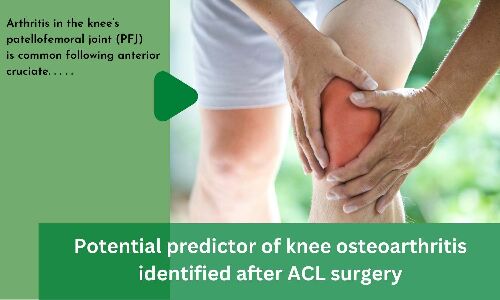
A special and intricate structure, the patellofemoral joint is made up of both static (bones and ligaments) and dynamic (moving) components (neuromuscular system). The patella is shaped like a triangle, with its point facing inferiorly. The main articulating surfaces of the patellofemoral joint, the trochlea and the distal articulating surface of the femur, are where it articulates superiorly.
Arthritis in the knee’s patellofemoral joint (PFJ) is common following anterior cruciate ligament reconstruction (ACLR) and may be linked with altered loading, or stress, at the joint. In a study published in the Journal of Orthopaedic Research, young adults post‐ACLR who exhibited lower PFJ loading during hopping were more likely to have PFJ osteoarthritis at 1‐year and worsening PFJ osteoarthritis between 1‐ and 5‐years.
In the study, data for net PFJ contact force were normalized to each participant’s body weight. For every one body weight decrease in the peak PFJ contact force during hopping, the proportion of people at 1-year post-ACLR with early PFJ osteoarthritis increased by 37%, and the risk of worsening PFJ osteoarthritis between 1- and 5-years post-ACLR increased by 55%.
“Clinical interventions aimed at mitigating osteoarthritis progression may be beneficial for those with signs of lower PFJ loading post-ACLR,” the authors wrote.
Reference:
Patellofemoral joint loading and early osteoarthritis after ACL reconstruction,Journal of Orthopaedic Research,doi 10.1002/jor.25504
